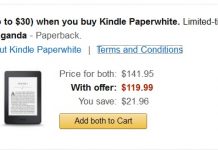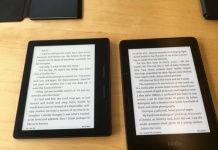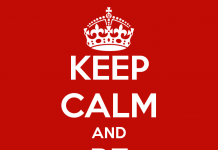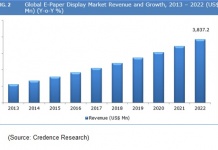 This is the era of bits and bytes and multimedia and 3D printing, not just books and other texts. But Shiyali Ramamrita Ranganathan’s Five Laws of Library Science would still apply today in spirit even after more than eighty years.
This is the era of bits and bytes and multimedia and 3D printing, not just books and other texts. But Shiyali Ramamrita Ranganathan’s Five Laws of Library Science would still apply today in spirit even after more than eighty years.
Educated originally as a mathematician, S.R. Ranganathan was a library-science genius who studied librarianship in Great Britain and worked as the librarian at the University of Madras. Accurately or not, he is said to have beaten out 900 competitors for the job. He peppered his writings with Indian philosophy, dressed Ghandi-simple, and avoided coffee and tea.
His laws, spelled out in a 1931 book available from the Hathi Trust in full text, are:
1. “Books are for use.”
2. “Every reader his book” or her book.
3. “Every book its reader.”
4. “Save the time of the reader.”
5. “The library is a growing mechanism.”
Reincarnated, what would this law-giver think of the Digital Public Library of America initiative out of Harvard—more a creature of the academic world than of our public libraries? In his opinion, would the current DPLA vision be addressing the America’s most pressing library needs in such areas as popular content, K-12, and family literacy?
I have many doubts, alas, even as a DPLA proponent. Later in this post, I’ll do my best to analyze the extent of the DPLA’s present compliance with all five laws. For now, though, here’s an extremely apropos headline in the Orlando Sentinel, run March 23 and spotted by TeleRead’s Susan Lulgjuraj: Soaring e-book demand strains Central Florida library budgets. This is the very stuff that the DPLA should fixate on if it is to honor Ranganathan’s second law. Walter Pacheco writes in the Sentinel:
For 25 years, Jennifer Krantz had been a frequent visitor to Orange County libraries, borrowing everything from mysteries to cookbooks to romance novels.
But since her boyfriend bought her an Amazon Kindle Fire tablet at Christmas, Krantz, 37, now rarely steps inside a public library.
“The library’s e-book service is great because I don’t have to park, walk to the library, find the book and check it out,” said the accountant. “The only complaint I have is that I have to wait longer than usual for an e-book because the library seems to stock few digital copies of the titles I want.”
Krantz represents a growing number of Central Florida readers depending on their public libraries to fuel their consumption of e-books, downloadable audiobooks and other digital media. At the same time, librarians across the Orlando area are scrambling to meet that increasing demand while facing rising e-book costs and budget cuts.
Why doesn’t the DPLA as an organization care more about about Floridians’ needs, especially in regard to Law #2, “Every reader his book”? What about the many readers like Terrence Johnson, a 30-year-old Orlando man and Kindle user? “The wait for the e-book is a little frustrating,” he told the Sentinel. “I know I can head to the library and check out the print book, but I really don’t like reading the print version.”
No, it isn’t as if the DPLA has not shown a commendable interest in copyright reform for the benefit of public and academic libraries alike, to increase the availability of older e-books, and, in fact, I’ll give the group a nice mention in this regard in another post in the next few days. But guess what? If Johnson is like Jennifer Krantz and most other public library patrons, he’ll want modern books, including the hottest bestsellers. “Every reader his book,” please!
Better laws and publishers more sensible about e-book prices for libraries still won’t wipe out the nasty truth that America’s libraries are able to spend just $1.3 billion or so annually on books and other content out of an already-less-than-adequate $11 billion in operating expenditures reported to the Institute of Museum and Library Services. Add in capital expenditures, for buildings and so on; and the percentage of spent on actual content drops still more. Couldn’t the efficiencies of a full-strength national digital library system help libraries go further in giving “every reader his book”? Especially if (like libraries in Canada and certain others in Colorado, Massachusetts and California and elsewhere) America’s libraries start moving away from an excessive and expensive dependence on outside vendors to store and distribute e-books? Who comes first? Vendors or taxpayers interested in the most and best library-books and other content for them? Hence the desirability of two national digital library systems—one public, one academic—to respond to people’s individual needs in the spirit of Law #2. Libraries should use, respect, and fairly pay good contractors. But the former, not the latter, must be the ones running the show.
Daniel J. Cohen, the DPLA’s new executive director, ideally can agree with the above, at least in time, if he does not already. For now, he sees the group as a way to extend local libraries’ “commitment to the public sphere, and provide them with an extraordinary digital attic and technical infrastructure and services to deliver local cultural heritage materials everywhere in the nation and the world.” And I like those ambitions and many others (even if the DPLA technical infrastructure envisioned so far won’t sufficiently wean public libraries off vendor-controlled servers).
Holder of degrees from Princeton, Harvard and Yale and conversant in fields ranging from digital history to theology, Dan has a background as a very accomplished professor at George Mason University, in Northern Virginia, from which he is moving to Boston; and I’m expecting many good things out of him for the DPLA as an academic library. But the organization should try harder than it has so far to help public libraries in Orange County and elsewhere follow Ranganathan’s Law #2 and the others in ways that leverage the efficiencies of digital technology. Similarly the DPLA should do more to help ordinary Americans achieve their personal goals—vocational, professional, health related, financial, you name it—rather than just rummage around the digital attic. We should embrace the past, present, and future.
With that in mind, I hope that the DPLA won’t take a Not Invented Here stance and ignore the detailed suggestions in such LibraryCity posts as a plea for a forking in time into two separate but tightly intertwined digital library systems respectively serving public and academic libraries; an argument for a Library-Publisher Complex for the digital era; an essay headlined ”Dwarf-sized public e-libraries vs. abundance”; a proposal for a national digital library endowment; and the related FAQ. Believe me, Ranganathan’s ghost is on my side.
Let’s return to all his laws now in a DPLA context:
1. Books are for use
In other words, S. R. Ranganathan didn’t simply want books archived, and if you chained a book to avoid theft, as did certain librarians, you might as well have done the same to a human, as S.R. saw it. He wanted books read.
The DPLA to its credit is exploring new ways to get more knowledge online for free, and S.R. would love those efforts. He would not, however, like the DPLA’s lack of sufficient interest in the related digital divide issues—such as the availability of the right hardware for e-reading as well as instruction in using the hardware. And what about the issue of absorbing the content through study guides, multimedia and in other ways? Those are just two reasons why we need two separate national digital library systems even though the public and academic systems could share some board members, plenty of content, a two-system catalog for the interested, and even a common technical services organization dealing with infrastructure and digital divide issues (the latter in coordination with for-profits, nonprofis and governments).
In the use department, something else comes to mind—the fact that e-readers and other devices make books more accessible in rural areas and for many people with disabilities who have problems reading traditional books or who face mobility challenges getting to the library. S.R. was keen on bookmobiles and even library books carried by mules, a precursor of today’s efforts to address the digital divide in the countryside and elsewhere. As for disabilities, consider all the millions of aging Americans who cannot splurge at Amazon and who would rather not be at the mercy of volunteers or book delivery services. I’m confident that Ranganathan would be just as passionate about library e-books as about mules and bookmobiles in the first half of the 20th century.
2. Every person his or her book
The DPLA mostly gets a big, fat “fail” in this regard. In terms of books, the current focus is on the classics and other public domain books, when, as noted by public librarians like Susan Flannery in Cambridge, Massachusetts, the masses crave the newer titles. “The books we purchased in last 12 months went out an average of 6.5 times last year,” I quoted her in one of my posts calling for a national digital library endowment. “The rest went out 2.44 times.” Ranganathan wanted library books for all socioeconomic groups, not just well-educated scholars interested in public domain items. Some classics will be required in schools. But the preferences of typical readers, especially for recreation, are elsewhere. Too bad. Even as a nonacademic, I like Dickens and Dreiser and others, but in accordance with Ranganathan’s teachings, libraries must serve all kinds of people.
Aggregation of for-profit library services such as those from OverDrive and 3M isn’t an answer, no more than copyright reform by itself is. Ideally the DPLA will also care about the financing of content and actually see if there are ways to align more closely the interests of libraries and publishers and lobby jointly at all levels of government so books get the financing they need and the number of library titles multiplies. According to the Economist, libraries make up a mere five percent of publishers’ sales and the average U.S. library branch offers a mere 4,350 books compared to Amazon’s more than 1.7 million. But what if these pitiful numbers were dramatically scaled up? For publishers who fret about libraries “devaluing” books and stealing from retail sales, my answer is simple: “What sales?”
The average American household spends just $115 a year on books and other reading material compared to around $2,600 on entertainment in general. Hardly nirvana. For written content especially, publishers and others would benefit from new business models—powered by people’s love of the “free,” but still fairly compensating publishing houses, writers and others. Not to mention public libraries’ promotion of reading in general, books and writers.
3. Every book its reader
Ranganathan had in mind open shelves and even pondered such questions as how high the ladders in the stacks should be. The DPLA’s final record in this regard, as with Laws #4 and #5, has yet to be written (and even on Laws #1 and #2, nothing is locked up absolutely). But I would suggest that its programmers and librarians experiment seriously with proactive Amazon-style systems that tip readers off about new titles likely to match their interests. Require patrons’ consent, given the privacy issues here. Good metadata, precisely located interbook linking (particularly with library-stable links), annotations, blogs and other forums can help the discovery process.
4. Save the time of the reader
What would be more time-saving than e-books that you could call up from your home? Libraries should worry more about serving readers than about protecting the buildings that house paper books (besides, other ways exist to draw crowds, such as story-telling hours).
In an era of two-job families strapped for cash and time, not everyone can get to the library for the copyrighted books in highest demand. For now, just a fraction of libraries’ collection expenditures are going for the book-related medium most respectful of readers’ time. As I’ve noted, the fault is not the libraries’ alone, considering some publishers’ insistence on highly unfavorable terms for libraries. But ideally DPLA can help educate the publishing houses.
5. The library is a growing mechanism
Here is where e-books could especially shine, given the ease of adding to collections without weeding the shelves of older physical items to make room for more. (Patrons not wanting to access books beyond a certain age could filter them out.) This is one more reason for the DPLA to honor Ranganathan’s memory and work much harder than now to go beyond a digital attic and some technical tools. Whatever the age of material, libraries can also grow through annotations and other user-added content.
* This Creative Commons licensed post originally appeared on LibraryCity.org.

































For me, it has become a question of portability. It is much easier to carry a Kindle Fire or a Nook tablet and to check out e-books than to go to the library, park, hunt down the print edition in the stacks and check it out. While I can’t get all the books that I want in a Kindle or Nook format, I am happy to find so many that I can. And, when it isn’t available, I am thankful that I can borrow the print copy of the title that I want, even though, sometimes, I may have to wait weeks before it is my turn in the queue.